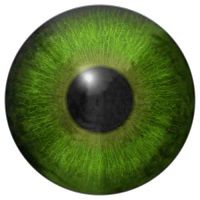Article
Predictors of Recurrent or Persistent Inflammation in Uveitis
Author(s):
Panuveitis is associated with recurrent or persistent inflammation (R/PI) for patients with both active and inactive uveitis, a study found.

Panuveitis is associated with recurrent or persistent inflammation (R/PI) for patients with both active and inactive uveitis, according to research presented at the annual meeting of the American Academy of Ophthalmology in Chicago, IL, in October 2016.
The study was presented in a poster session by Pauline T. Merrill, MD, of Rush University Medical Center in Chicago.
The researchers analyzed a total of 218 patients using multiple hazards regression with backward elimination in order to identify predictors of R/PI. Of the total 218 patients, 107 had active nonanterior, noninfectious uveitis, and 111 had inactive uveitis.
The patients for the present study were drawn from the VISUAL-1 and VISUAL-2 trials, which were both “multinational, double-masked, phase 3 trials conducted with adalimumab,” according to the poster. The VISUAL I and VISUAL II trials found that adalimumab is an efficient, safe treatment to lower the risk of uveitis flares and vision loss in patients with inactive and active non-infectious uveitis.
“Higher risk of recurrent or persistent inflammation was associated with panuveitis in both VISUAL I and VISUAL II studies,” say the researchers. In this study, recurrent or persistent inflammation was defined as having at least one of the following in at least one eye: inflammatory, chorioretinal and/or inflammatory retinal vascular lesions, inability to achieve anterior chamber cell grade of 0.5+ or less, the inability to achieve 0.5+ or less vitreous haze grade, and/or a worsening of visual acuity.
Although panuveitis was associated with R/PI for both inactive and active patients, the researchers found additional predictors for inactive patients. Being male, more than two flares in the previous 12 months, and a higher corticosteroid dose were additional predictors for inactive patients at the baseline of VISUAL II.
Related Coverage:
Investigational Implant Halts Recurrence of Uveitis Inflammation, Improves Visual Acuity
Study Shows TNF Inhibitors Prevent Relapse of Uveitis in Most Patients with Ankylosing Spondylitis
Vitamin D Deficiency Is Significantly More Common in People with Noninfectious Uveitis





